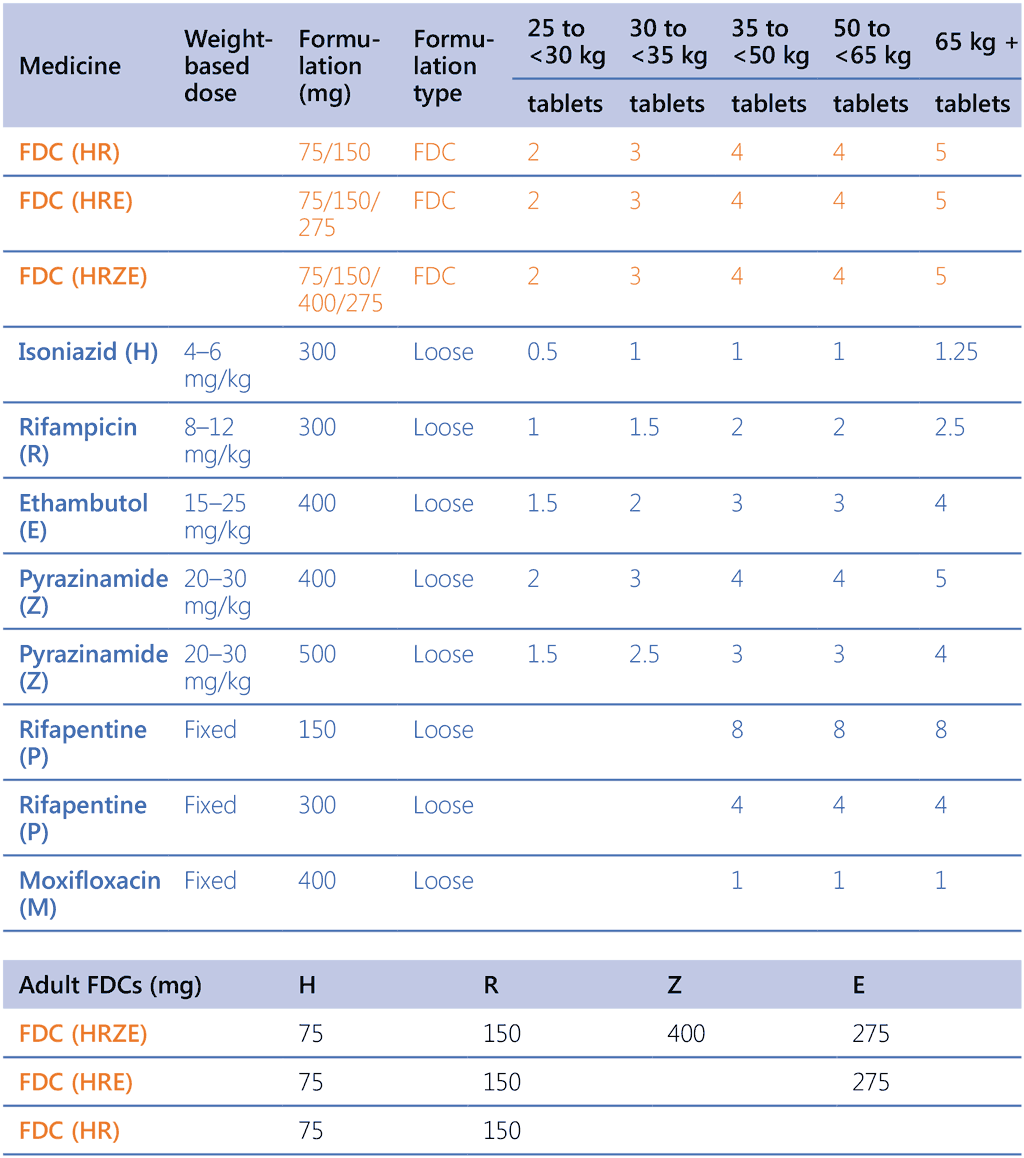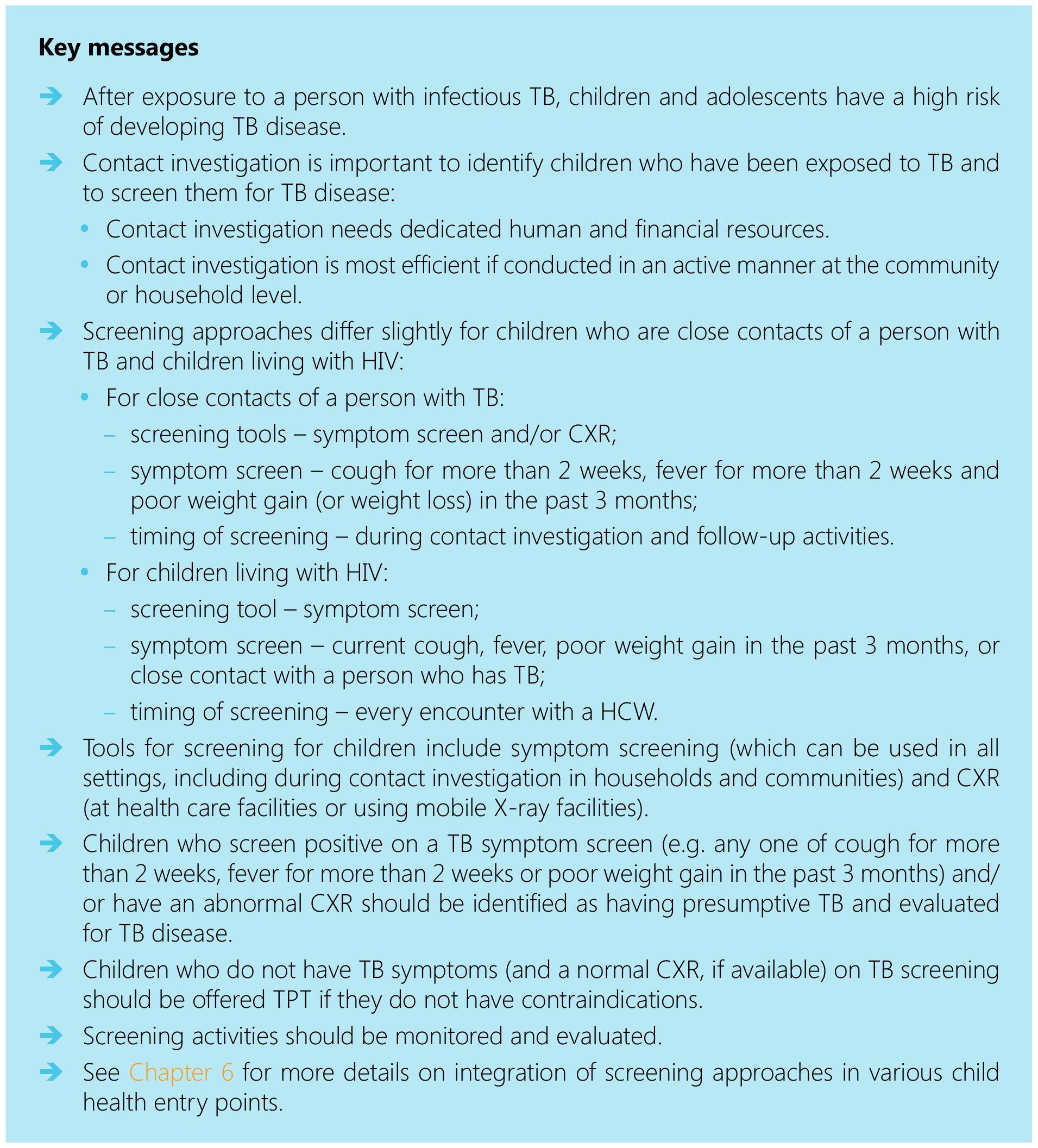Operational Handbooks
References
- WHO consolidated guidelines on tuberculosis Module 4: Treatment – drug-susceptible tuberculosis treatment. Geneva: World Health Organization; 2022.
- WHO operational handbook on tuberculosis Module 4: Treatment – tuberculosis care and support. Geneva: World Health Organization; 2022.
- The End TB Strategy (WHO/HTM/TB/2015.19). Geneva: World Health Organization; 2015 (https://www.
Annex. Dosages of anti-TB medicines by weight band for treatment of DS-TB

DS-TB: drug-susceptible TB; FDC: fixed-dose combination; TB: tuberculosis.
Web annexes
Web annex 1
Clinical outcomes and pharmacokinetics of first-line drugs (rifampicin, isoniazid, ethambutol and pyrazinamide) in children (aged <18 years) treated for drug-susceptible tuberculosis: systematic review and meta-analysis.
Click here to view pdf
10.2 Considerations for implementation
It is both important and feasible for NTPs to ascertain cure at the end of treatment. The notion of relapse-free cure or sustained treatment success after the end of treatment is critical; however, it is beyond the means of routine programmatic monitoring and is feasible only under operational research conditions (e.g. in special cohorts, in patients undergoing rehabilitation and during follow-up for post-TB lung disease).
10.1 Treatment outcome definitions
In November 2020, the WHO Global TB Programme (WHO/GTB) convened an online consultation and released new definitions of TB treatment outcomes, which were the same for DS-TB and DR-TB (97-99).
The principles guiding the update of the definitions were as follows:
10. Outcome definitions
DS-TB is largely curable with treatment that is affordable and widely accessible. If a TB treatment regimen is not administered correctly, it may fail to deliver a relapse-free cure, thus increasing transmission and accelerating the emergence of drug-resistance. Monitoring the effectiveness of TB treatment is thus critically important in both clinical practice and surveillance, to maximize the quality of individual patient care and the effectiveness of public health action.
9.4 Assessment of patients when treatment failure is suspected
Any patient not clinically responding to therapy after several weeks should be considered as being at risk for failure. In particular, patients should be considered as being at high risk for treatment failure if they had at least 3 months of full adherence to what was deemed to be an effective treatment regimen with quality-assured drugs, but show evidence of active disease – either clinical, radiographic or bacteriological (DST or culture) – or reappearance of disease. The following steps are recommended in such a situation.]
Confirm treatment
9.3 Sputum smear and culture
Response to treatment in pulmonary TB patients is also monitored by bacteriological sputum smear examination and culture. For pulmonary DS-TB, the most important evidence of improvement is conversion of the sputum culture to negative. For extrapulmonary TB, sputum smears and cultures are only performed during the monitoring period if the patient develops pulmonary signs, or in the rare situation when materials valid for microbiological examinations are collected from the extrapulmonary site.
Pagination
- Previous page
- Page 2
- Next page
